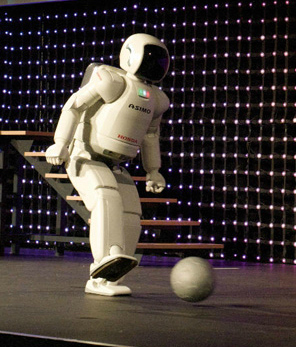The greatest resistance to Robotic Process Automation comes from IT departments

Lately, I've been hearing some people refer to the incoming wave of labor-replacing, process-enhancing automation as a "digital workforce," which suggests some type of side-by-side pairing with the human workforce, just as contingent workforce gets paired with full-time workforce.

Whether you or not you like these new semantics, the constellation of technologies that are birthing the digital workforce are a force to be harnessed, and if applied with forethought and entrepreneurial spirit, may open up new horizons for companies and their carbon-and-water-based human employees.
Such is the perspective taken by Justin Watson, David Wright and Marina Gordeeva, all with Deloitte UK, and authors of a recent report based on a survey of 400 executives and finds a majority, 53 percent, have initiated efforts to embed Robotic Process Automation (RPA) into their enterprises. This is expected to increase to 72 percent within the next two years. However, there is a surprising source of resistance to RPA initiatives.
For anyone who follows surveys closely, there's always a tendency for executives to check the "yes" box for whatever the latest hot technology trend is taking place. What is often the case, however, is these respondents don't want to feel left out, and are referring to some kind of limited or pilot project taking place within their organizations.
The Deloitte authors acknowledge this, noting that RPA may be something everybody aspires to, but isn't ready to scale across enterprises. "Levels of implementation remain similar to those reported last year, and only three percent of organizations have managed to scale RPA to a level of 50 or more robots," Watson and his co-authors state.
RPA has great support -- except from, of all places, IT departments. The Deloitte survey finds 72 percent reported a C-suite that is supportive of RPA. "The IT organization, on the other hand, remains the least supportive stakeholder when it comes to RPA." Only 31 percent report support for RPA initiatives from IT. "It can be difficult to move RPA up the priority list of IT organizations when they are often focused on more immediately pressing and large-scale challenges of keeping the lights on,migrating estates to the cloud, and preparing for next-generation ERP," the Deloitte team states.
It's also likely that beneath the RPA hype, IT teams will be charged with tearing up existing processes tied to technology, re-architecting for digital workforce approaches, and cleaning up the messes. As Wright and his team put it, "process standardization is the top challenge faced by organizations across all stages of the RPA journey. Put simply, process complexity drives robot complexity: it increases the cost and difficulty to design and implement RPA, increases operating costs,and increases business disruption. Robots require detailed process accuracy and needto be taught at the keystroke level. Yet, organizations are finding processes are not always well understood,even where robust process documentation exists."
Still, there are very high expectations for RPA -- at least from business leaders -- and the potential of digital workforces. Eventually, "robots could deliver a significant portion of current transactional activities," the Deloitte authors state. "On average, the expectation is that 20 percent of full-time employment capacity could be provided by robots. This expectation matches the reality for those that have already implemented RPA."
Those companies that have successfully scaled RPA "appear to have had such a positive experience that their expectations are even more ambitious: they believe that 52 percent of full-time employment capacity could be provided by robots. This can enable the human workforce to be redeployed to more value adding activities."
The survey also found RPA is delivering impressive benefits in these early stages. For starters, it has an average payback period of just under 12 months, Watson and his co-authors observe. In addition, they note, "RPA continues to outperform expectations on non-financial benefits such as accuracy, timelines, flexibility and improved compliance, with at least 85 percent of respondents reporting that RPA met or exceeded their expectations in these areas. In addition, a total of 61 percent reported their expectations of cost reduction being met or exceeded."
This appears to be good news for the human workforce, they relate, with some executives indicating that the move to RPA has "enabled them to move people from performing transactional tasks to higher-value activities that also led to greater job satisfaction."